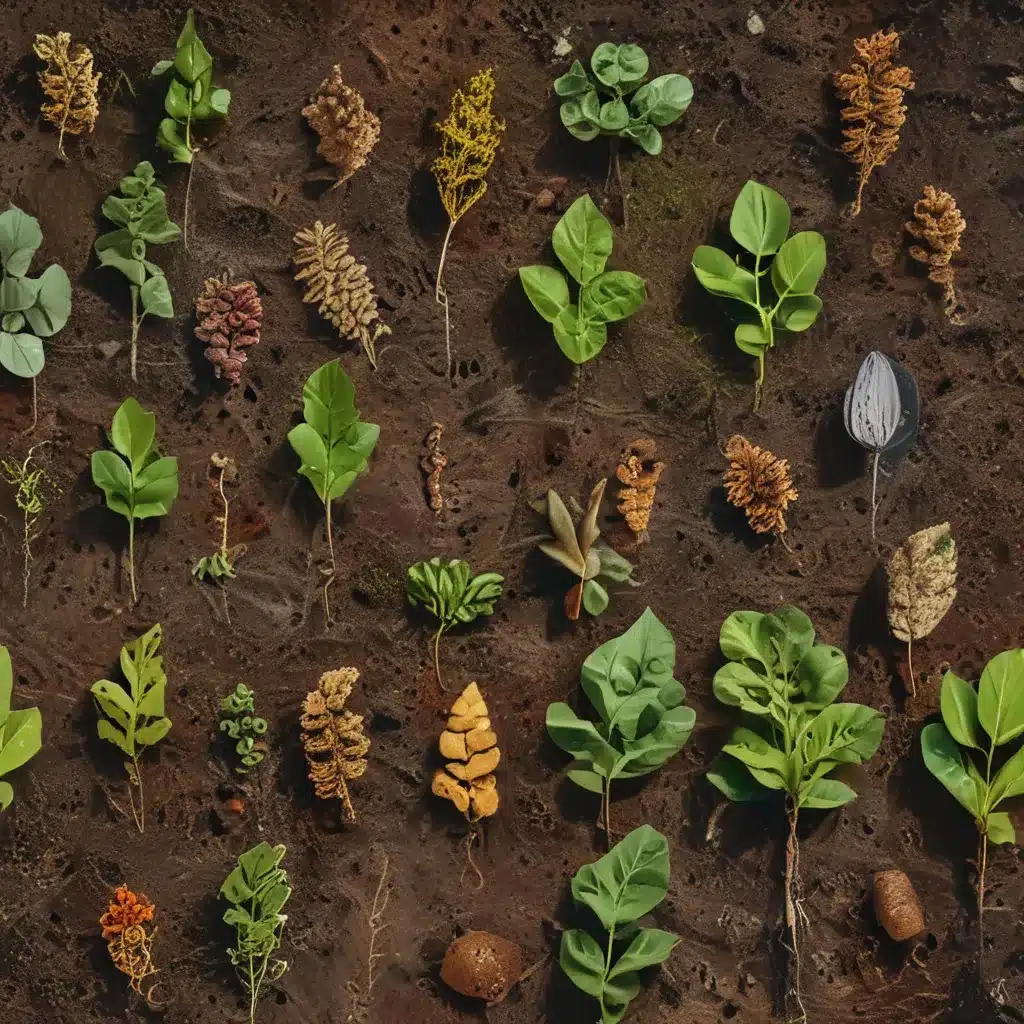
The Soil’s Hidden Superstars: Microbes to the Rescue
As I strolled through the lush, verdant fields of our community-supported agriculture (CSA) farm, Thornhapple CSA, I couldn’t help but marvel at the sheer abundance of life beneath my feet. Beneath the surface, a bustling metropolis of microorganisms was hard at work, orchestrating a symphony of nutrient cycling and soil enrichment. These unsung heroes, invisible to the naked eye, hold the key to unlocking the true potential of our agricultural ecosystem.
It’s easy to take the soil for granted, but this living, breathing foundation is the lifeblood of our farm. Within a single teaspoon, there dwell more microbes than there are people on our planet. These microscopic powerhouses are the maestros of nutrient cycling, soil structure, and plant health. By understanding their roles and harnessing their incredible capabilities, we can unlock a sustainable future for our farm and our community.
The Microbial Dance: A Delicate Balance
Just like any well-choreographed performance, the soil microbiome thrives on balance and diversity. Each species of microbe has its own unique role to play, from decomposing organic matter to fixing atmospheric nitrogen. When these microbes work in harmony, the result is a rich, fertile soil that can support an abundance of nutrient-dense crops.
Take, for example, the humble Bacillus subtilis. This friendly bacterium is a true workhorse, producing enzymes that can break down a wide range of organic compounds. It’s a welcome guest in our farm’s biome, helping to transform plant residues and animal manure into a nutrient-rich humus that nourishes our crops. On the other hand, its less-friendly cousin, Bacillus anthracis, is the culprit behind the dreaded anthrax disease. The key is recognizing the differences between these microbes and leveraging the power of the beneficial ones.
Another fascinating example is the ubiquitous Escherichia coli (E. coli). While certain strains can pose a serious health risk, the E. coli that call our guts home are essential for proper digestion and nutrient absorption. It’s all about understanding the nuances and harnessing the remarkable capabilities of these microscopic partners.
Microbial Marvels in Action
The magic of the soil microbiome doesn’t stop at nutrient cycling. These powerhouses also play a vital role in maintaining soil structure, suppressing plant diseases, and even contributing to sustainable energy production.
Soil Structure and Resilience
One of the key benefits of organic matter and the microbes that thrive on it is the enhancement of soil structure. As microbes break down organic materials, they release polysaccharides and other sticky compounds that bind soil particles together, creating a more porous and resilient foundation. This improved soil structure translates into better water infiltration, reduced erosion, and enhanced moisture-holding capacity – all of which are crucial for supporting healthy plant growth, even in the face of environmental stresses.
As the folks at Better Plants have noted, “Organic fertilisers promote soil structure, fertility, and resilience by enriching the soil with essential nutrients and fostering microbial activity.” By embracing the power of organic matter and its microbial allies, we can create a self-sustaining ecosystem that requires fewer external inputs and is better equipped to withstand the challenges of modern agriculture.
Disease Suppression and Bioremediation
The soil microbiome’s benefits extend beyond just improving soil structure. These microscopic superheroes also play a crucial role in disease suppression and bioremediation, helping to keep our crops healthy and the environment clean.
Many beneficial microbes produce compounds that inhibit the growth of plant pathogens, creating a natural barrier against disease. By fostering a diverse and thriving soil microbiome, we can harness this disease-fighting power and reduce our reliance on harmful chemical pesticides.
Furthermore, certain microbes are true masters of bioremediation, capable of breaking down and removing pollutants from the environment. As the experts at ROI Biologicals point out, “Microbial bioremediation carries numerous sustainable benefits and dramatically reduces toxins in marine environments.” Whether it’s removing excess nutrients from agricultural runoff or tackling stubborn contaminants, these microbial alchemists are the unsung heroes of environmental restoration.
Biogas and Bioenergy Production
The wonders of the soil microbiome don’t end there. In a surprising twist, these microscopic powerhouses are also making waves in the world of sustainable energy production.
Through the process of anaerobic digestion, certain microbes can break down organic matter and convert it into biogas, a renewable fuel source. As highlighted by the team at Biological Preparations, “Bioenergy production has seen some farms run almost entirely on biogas, vastly reducing the farm’s carbon footprint.” By harnessing the power of these microbial methane producers, we can close the loop on our nutrient cycle and generate clean, renewable energy right on our own farm.
Cultivating a Thriving Microbiome
With the remarkable capabilities of the soil microbiome in mind, the question becomes: How can we nurture and maintain this delicate ecosystem? The answer lies in embracing a holistic, sustainable approach to farming that prioritizes organic matter and microbial diversity.
The Power of Organic Matter
At the heart of a thriving soil microbiome is organic matter. This natural treasure trove of nutrients and microbial food sources is the foundation upon which our farm’s health is built. By incorporating a steady supply of compost, crop residues, and animal manure into our soil management practices, we can ensure a constant influx of nourishment for our microbial partners.
As the team at Better Plants has noted, “Organic fertilisers derived from natural sources such as compost, manure, and plant residues benefit both soil and crops.” By harnessing the power of these natural inputs, we can create a self-sustaining cycle of nutrient replenishment and soil enrichment, all while fostering a diverse and resilient microbiome.
Nurturing Microbial Diversity
Diversity is the key to a healthy soil microbiome. Just as monocultures in our fields can leave crops vulnerable to pests and diseases, a lack of microbial diversity can compromise the overall health and resilience of our soil. That’s why it’s crucial to embrace a wide range of organic inputs and avoid relying on a single source of organic matter.
By maintaining a diverse array of microbial species and strains, we can ensure that our soil is equipped to handle a variety of challenges, from nutrient deficiencies to pathogen invasions. This microbial insurance policy not only supports plant health but also contributes to the long-term sustainability of our farming operations.
The Microbiome’s Boundless Potential
As we delve deeper into the hidden world of soil microbes, it’s clear that these unsung heroes hold the key to unlocking a more sustainable and productive future for our farm and our community. By harnessing the power of organic matter and nurturing a thriving microbiome, we can create a self-sustaining ecosystem that requires fewer external inputs, supports healthy plant growth, and even contributes to renewable energy production.
The journey ahead may be filled with surprises and discoveries, but one thing is certain: the soil microbiome is our silent partner in the pursuit of a greener, more resilient tomorrow. So let’s continue to explore, learn, and unlock the boundless potential of these microscopic marvels, one healthy harvest at a time.



